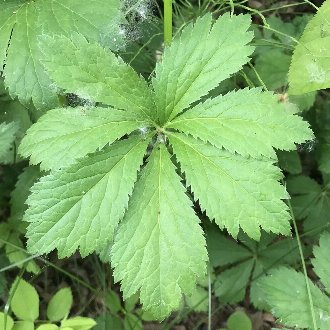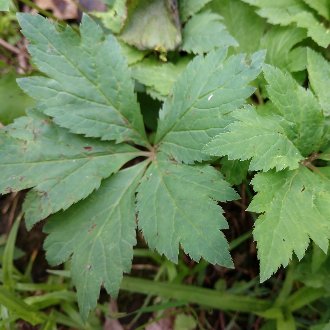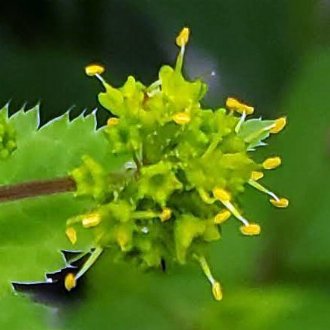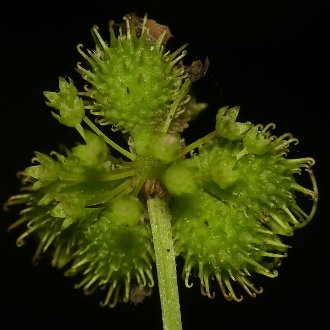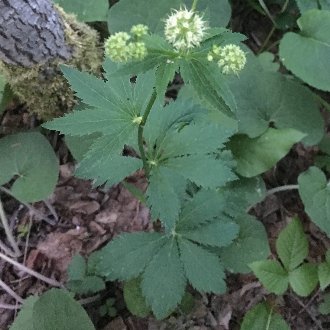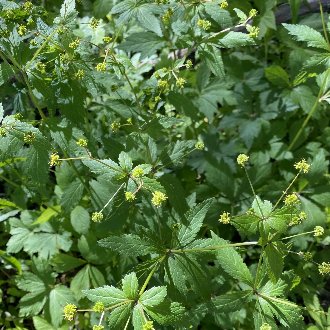Maryland Sanicle vs Clustered Blacksnakeroot
These species have a large area of range overlap and are easily confused because both usually have 5 leaflets, and both have relatively showier, globe-shaped inflorescences with more numerous staminate flowers on longer pedicels, making them look similar to each other and less similar to the other two common Sanicula in the east. They can usually be distinguished the shape of the two leaflets close to the base of each leaf on basal leaves, and also by flower color and whether seeds are sessile. S. odorata ranges into sunnier, more disturbed habitats, is more likely to occur in large colonies, and ranges farther west in the southern states, whereas S. marilandica has a greater preference for slopes and high pH soils, and ranges farther north, and farther west in the north of its range.
Maryland Sanicle (Sanicula marilandica) | Clustered Blacksnakeroot (Sanicula odorata) |
A biennial of rich woods, particularly slopes, native to the northern and high-elevation portions of both eastern North America and the interior west. | A biennial of rich, deciduous woodlands, favoring sites that have experienced some recent disturbance. |
On basal leaves, the two leaflets close to the base of each leaf are usually deeply-cut, leading to a look, at a glance, that hints at having 7 leaflets, but usually only having 5 actual leaflets. Leaflets longer relative to their width, and leaf margins more regular. Photo © Caleb Catto, CC BY 4.0. | Consistently has 5 leaflets and looks like it has five leaflets. The two leaflets close to the base of each leaf may have a deep cut but it is usually not quite as deep, and usually the lobe on the one side of the cut is greatly reduced to where it does not give the illusion of 7 leaflets. Leaflets wider relative to their length, and leaf margins more jagged. Photo © Nathan Rauh, Public Domain. |
Flowers are greenish-white; anthers are a more muted color. Filaments are more squiggly. Photo © botany08, CC BY 4.0. | Flowers are yellow-green, with bright yellow anthers. Filaments are straighter. Photo © aarongunnar, CC BY 4.0. |
Fruits sessile or nearly sessile (without a stem), leading clusters to looked more bunched-up. Fruits average larger. Photo © Mary Krieger, CC BY 4.0. | Fruits on a short (0.5-1mm) pedicel, hard to see, but long enough that fruit clusters look noticeably more open. Fruits average smaller in size. Photo © Shaun Pogacnik, Public Domain. |
More likely to be solitary or in small groups. Found, on average, in slightly shadier habitats. Photo © maureen_c-m, CC BY 4.0. | "Gregarious", more likely to be found in large colonies, often forming a mass of vegetation. Ranges into sunnier habitats. Photo © Jim Bowhay, Public Domain. |
References & External Resources
These short lists show only links helpful for ID. For a complete list of references and resources also covering other aspects of ecology, visit the links section of the full article on each plant, which is the first entry here.



